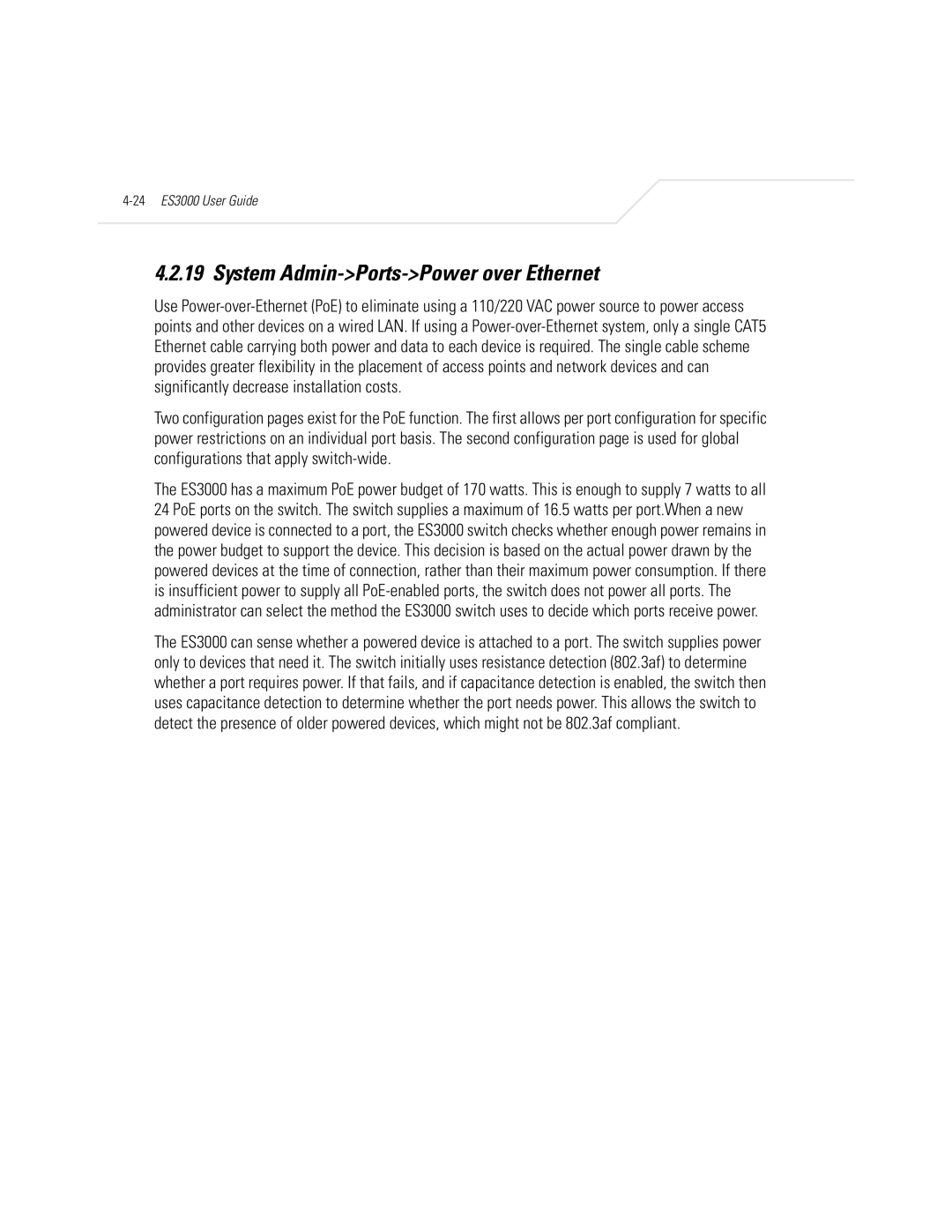4.2.19 System Admin->Ports->Power over Ethernet
Use
Two configuration pages exist for the PoE function. The first allows per port configuration for specific power restrictions on an individual port basis. The second configuration page is used for global configurations that apply
The ES3000 has a maximum PoE power budget of 170 watts. This is enough to supply 7 watts to all 24 PoE ports on the switch. The switch supplies a maximum of 16.5 watts per port.When a new powered device is connected to a port, the ES3000 switch checks whether enough power remains in the power budget to support the device. This decision is based on the actual power drawn by the powered devices at the time of connection, rather than their maximum power consumption. If there is insufficient power to supply all
The ES3000 can sense whether a powered device is attached to a port. The switch supplies power only to devices that need it. The switch initially uses resistance detection (802.3af) to determine whether a port requires power. If that fails, and if capacitance detection is enabled, the switch then uses capacitance detection to determine whether the port needs power. This allows the switch to detect the presence of older powered devices, which might not be 802.3af compliant.
